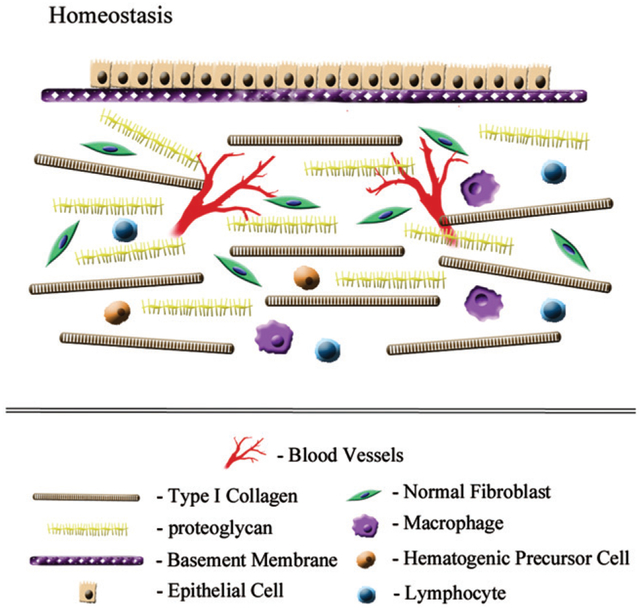Figure 1.
Homeostatic balance. Normal development and organogenesis results in the formation of two tissue compartments each with distinct extracellular matrices. The normal epithelial/endothelial compartment (upper layer) is composed of polarized (basal versus luminal surfaces) cell layer(s), that are attached to the basement membrane. This basement membrane represents a dense type IV collagen containing barrier that prohibits cell migration between compartments. The mesenchymal compartment (lower layer) has a stromal matrix comprised of structural macromolecules, such as type I collagen and proteoglycans, which determine biophysical parameters, such as rigidity (stiffness) and hydration. Both the basement membrane and stromal matrix are constantly remodeled in a highly controlled fashion by matrix proteases and their endogenous inhibitors.

